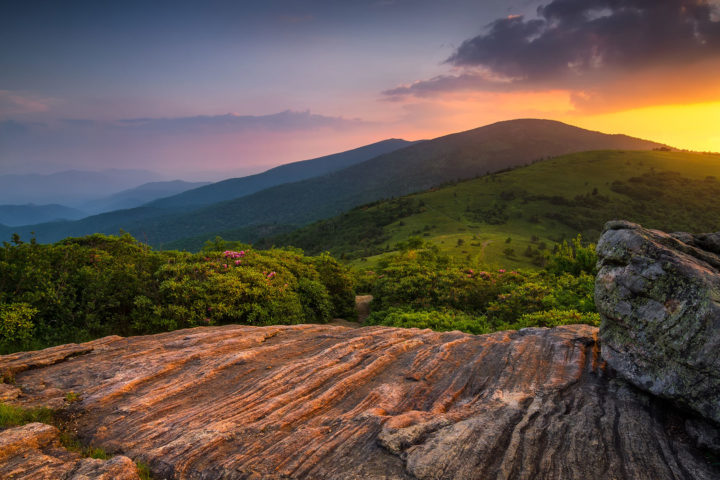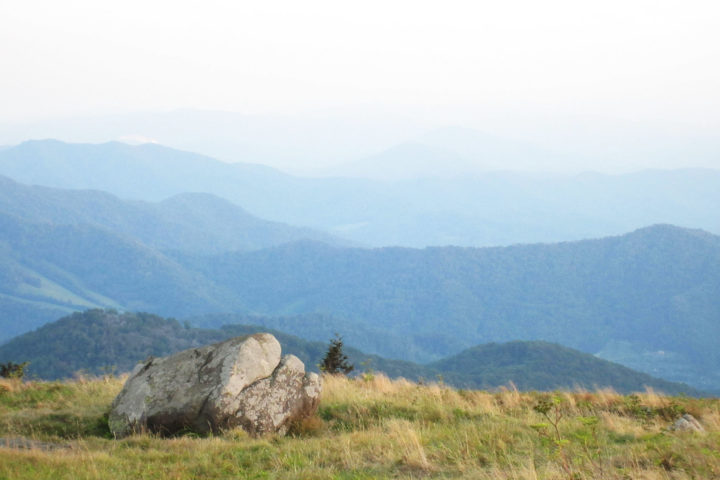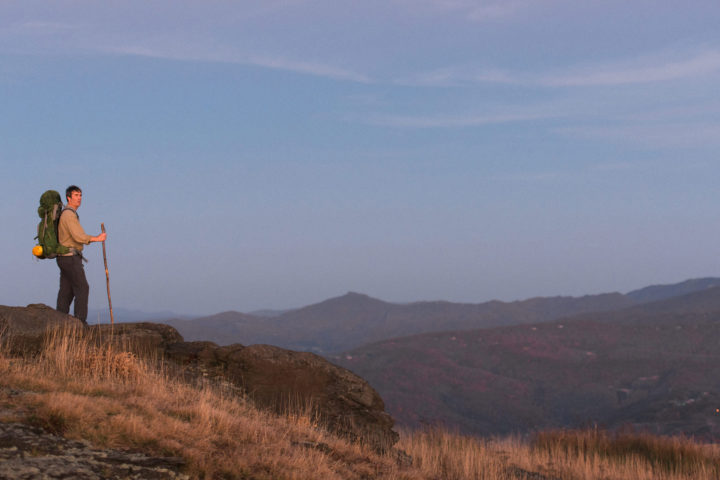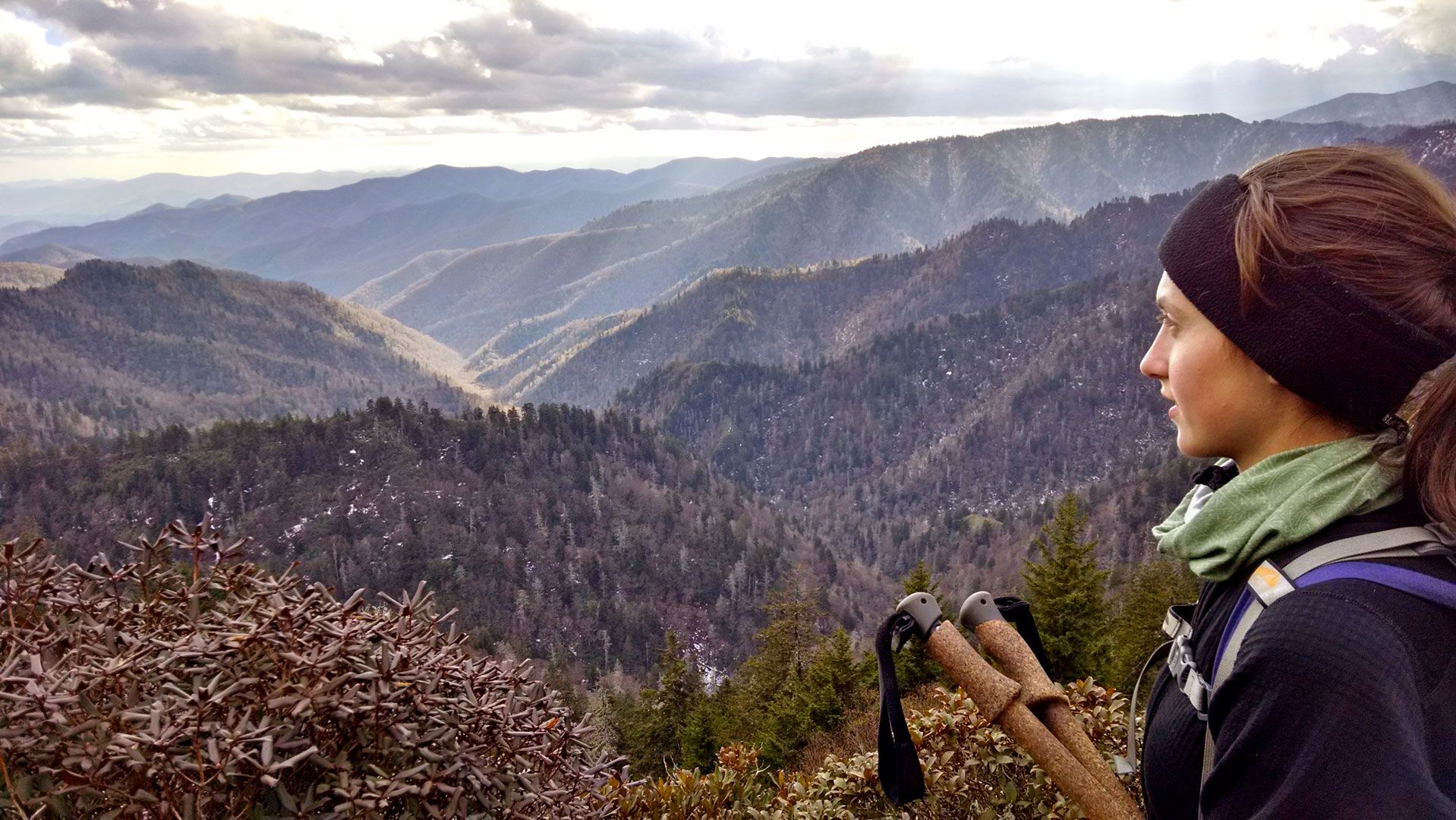By Jordan Bowman and Shalin Desai
Preserving the “Oxygen” of the Trail
January 29, 2021
Throughout 2021, the Appalachian Trail Conservancy will be celebrating the 100th anniversary of the publication of “An Appalachian Trail: A Project in Regional Planning,” Benton MacKaye’s essay which envisioned the world’s most famous hiking trail. We will focus on MacKaye’s key concepts and examine how the grand vision he laid out informed not just the last century of Trail building and management, but also informs A.T. conservation for the next century and beyond.
The following post is part of our series on climate change and the Appalachian Trail. For other parts in the series, click the links below.
- Part One – Preserving the “Oxygen” of the Trail
- Part Two – The A.T. and Climate Change: Reviewing the Basics
- Part Three – Climate Resiliency and the A.T.
- Part Four – Climate Action and the A.T. Landscape: A Primer
- Part Five – A Climate-Resilient A.T. Depends on Effective Federal Policy
- Part Six – Building a Climate-Resilient A.T. Landscape
“The oxygen in the mountain air along the Appalachian skyline is a natural resource (and a national resource) that radiates to the heavens its enormous health-giving powers with only a fraction of a percent utilized for human rehabilitation. Here is a resource that could save thousands of lives.”
-Benton MacKaye
Published in October 1921, Benton MacKaye’s vision was a product of his time – a period of rapid change, churn, and growth. In the few years preceding the publication of his essay, the nation participated in a world war, came out of a flu epidemic, was debating the human and civil rights of women and minorities, and was growing economically at an unprecedented rate. The stresses and strains these various layers of change created caused Benton to look outward — to the “health-giving powers” of the Appalachian Mountain air. A key piece of the A.T., in his mind, was creating and conserving a place where we could all benefit from the “dynamic forces of nature.”
For nearly a century, the Appalachian Trail Conservancy (ATC) has led the way in protecting, managing, and advocating for the A.T., working to maintain the “oxygen” of the Trail both literally and metaphorically. So much more than a footpath, the A.T. encompasses a world that helps sustain our quality of life — notably, by protecting the environment from which we find the sources of life. By protecting A.T. forests and other habitats, improving their health through restoration and stewardship, and improving access to the Trail for visitors to explore and enjoy, we and our Trail management and landscape conservation partners have helped maintain and protect the largest contiguous greenway east of the Mississippi River.
Now we are faced with an accelerating challenge not only for the A.T. but for the world: climate change. As the negative impacts of climate change become more evident through scientific study and analysis, the importance of increasing the resiliency of the A.T. landscape has never been more important. Our work will not only help ensure the long-term protection of the A.T. hiking experience but also assist in mitigating the effects of climate change throughout the Appalachian region and beyond.
“Climate-resilient lands are areas which can more readily withstand and recover from these impacts and maintain biodiversity, ecological health, and function as the climate changes,” said ATC Director of Science and Stewardship Marian Orlousky. “They provide important services like carbon sequestration, clean air, and clean water, that will only grow in demand. As the earth’s climate continues to warm, and additional challenges like invasive species and wildland fires afflict the A.T., the ATC is focusing its efforts towards protecting, connecting and stewarding the lands that will be most critical for resisting and alleviating climate impacts.”
Over the next several weeks, we will explore the topic of climate change and the A.T. in detail: what are the impacts we expect, what the ATC and its partners are doing to combat these impacts, and what else needs to be done to ensure the long-term survival of the A.T. as we know it. The need to address this issue has only grown over time and underscores the urgency for action now.
Your donation supports our work to fortify the Appalachian Trail against the effects of climate change, helping ensure it will continue to benefit us all for generations to come.
Discover More

A.T. Footpath
Continuing the A.T. Vision
Even after 100 years, Benton MacKaye’s 1921 vision for the Appalachian Trail continues to guide the ATC in its mission.

The A.T. Landscape Partnership
A Dynamic Approach to Landscape Conservation
The Appalachian Trail Landscape Partnership is a dedicated coalition of local, state and federal partners led by the Appalachian Trail Conservancy and the National Park Service.

ATC's Official Blog
A.T. Footpath
Learn more about ATC's work and the community of dreamers and doers protecting and celebrating the Appalachian Trail.

